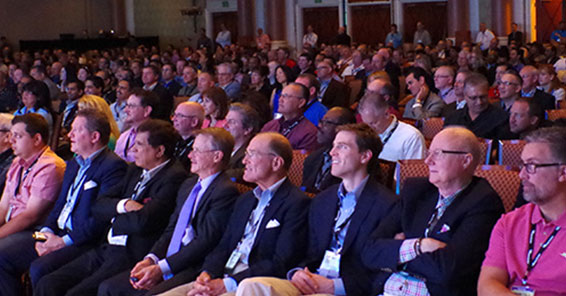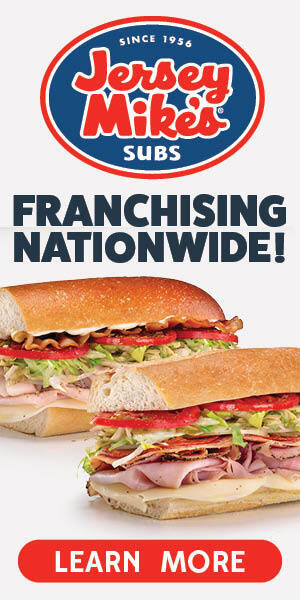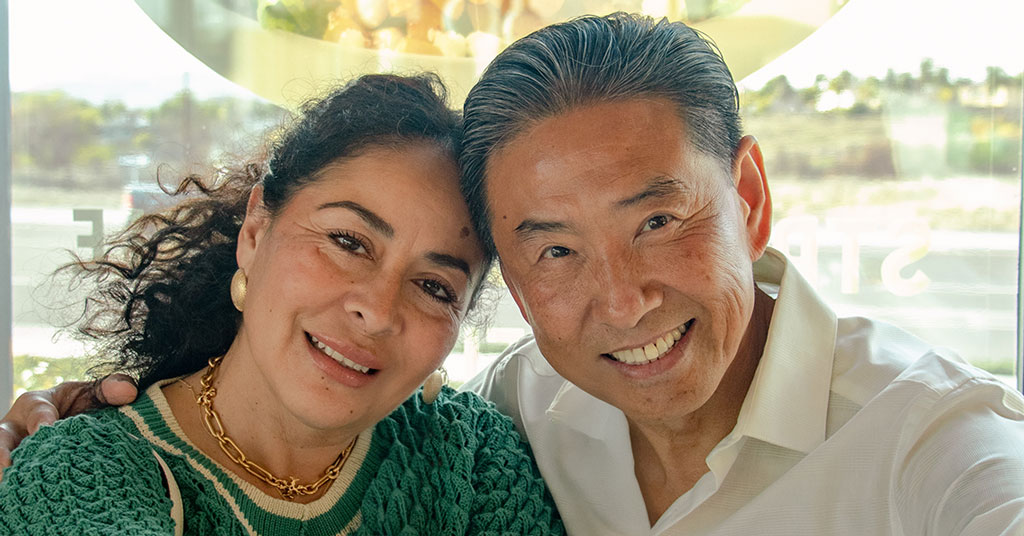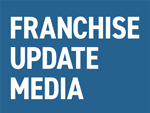When choosing to invest in a new brand, what is your thought process?

We received so many great responses to this question that we’re running a Part 2. (Find part 1 here.)
Choosing to add or switch to a new brand involves multiple factors, each critical to long-term success—some more than others, depending on which factors matter most in aligning with your business and personal goals.
At last month’s Multi-Unit Franchising Conference, more than 1,000 franchisees looking to expand or diversify their businesses were treated to bucketloads of useful advice—from both their fellow franchisees and in panel sessions such as “Discovering Your Next Brand: A Guide to Effective Research” and “Essential Steps for Launching Your Next Brand,” among the many breakout sessions focused on multi-unit/multi-brand growth.
Looking to grow? See what they have to say!
Franchisee Bytes: What is the hardest lesson you’ve learned as a franchisee?
Like what you see here? Tell us! Already subscribed? Tell your friends!
PRANAV DESAI
Company: Executive Officer, TIG (The Integritty Group)
Brands: 35 Qdoba, 2 Dave’s Hot Chicken, 2 Greene Turtles
Years in franchising: 9
There is no fixed formula here. But with 20+ years of experience, and after evaluating 10+ brands, I feel confident that we have developed a principled approach to how we choose a new brand. It is a balance of financial metrics, market insights, understanding of industry trends, and, most importantly, strategic alignment with our long-term strategic goal. Here’s my summary of the general process and steps we follow when we look at a particular brand.
1. Differentiated Concept & Market Fit
- Is this brand unique or has a differentiated offering? Is the marketplace crowded?
- Does it cater to emerging and yet sustainable market conditions?
- Is there a clear understanding of the target market condition?
2. Founder & Executive Team
- What is the vision and direction provided by the founder?
- Do the founders have a strong background and successful history?
- Do they have a leadership and support team to execute on the strategy and vision?
3. Financial Viability
- What are the initial investment costs and expected return on investment?
- Is the business scalable, or is it a niche concept?
- Are margins sustainable?
- How strong is the brand value in the market for an exit?
4. Location & Expansion Strategy
- What has been the performance of their initial locations’ new markets?
- What type of franchisees are in the market, and can they scale it?
- What territories are available and what are the development agreements associated with them?
5. Operational Efficiency
- How complicated or easy is the operating model?
- Is supply chain and inventory management optimized and transparent?
- Is staffing manageable in the current labor market?
6. Competitive Landscape
- Who are the key competitors, and how does this brand compare?
- What barriers to entry exist in the space?
- Does the brand have a defensible competitive advantage?
7. Brand Strength & Marketing
- Is the brand identity strong and memorable?
- Does it have a solid marketing strategy (social media, PR, word of mouth)?
- Are there existing customer reviews or a loyal following?
8. Risk Assessment
- What are the biggest risks (economic downturns, consumer preference shifts, operational challenges)?
- Are there contingency plans in place for worst-case scenarios?
- How adaptable is the brand to changes in the market?
VERNON DAVIS
Company: Franchisee, Jamba Juice
Brands: 3 Jamba Juice
Years in franchising: 9
For professional athletes considering franchise ownership as a new venture, my first piece of advice is to thoroughly investigate the brand’s background, including its history and financial performance. Understanding the average net profit for franchisees and the timeline for recovering the initial investment is crucial. Many athletes, despite their wealth, often enter business ventures without adequate knowledge, leading to significant financial risks. My second recommendation is to seek experienced operators, ideally those with over a decade in franchising. Engaging with the franchise’s corporate team can provide valuable resources and recommendations for strong candidates. Lastly, it is essential to emphasize the importance of patience in business. While many athletes earn substantial incomes, they must recognize that transitioning to franchise ownership involves navigating a different financial landscape where immediate high returns may not be feasible.
CAROLYN & LINDSAY LEVERETT
Company: Franchisees, Sunny Street Café
Brands: 3 Sunny Street Café
Years in franchising: 16
When we chose to invest in Sunny Street Café, there were several factors we considered to ensure it was the right financial and personal decision for us. We looked into the initial investment, which included the franchise fee, equipment, and other startup costs. We also looked at the royalties and fees and how they would impact the long-term profitability of the business.
We carefully considered the hours of operation and how much time the business would require from us. To us, it was really important that the time commitment aligned with our lifestyles. With a brand like Sunny Street Café, we wanted to ensure we could balance being hands-on and relying on a trusted team to manage day-to-day operations.
Our journey with Sunny Street Café began when we were introduced to the brand under the name Rise & Dine. About a year after opening its first franchise location, it rebranded to Sunny Street Café, and that’s when we took a closer look. We traveled to Ohio and Florida to visit its different locations, and we were immediately impressed by how the restaurants operated, including the quality of food, the friendly atmosphere, and the overall experience.
This brand clearly had something really special, and we quickly fell in love with it. The attention to detail in both the food and customer service made it easy for us to see ourselves as part of this brand’s future, and from there, it was a no-brainer to invest.
JOHN METZ
Company: CEO & Founder, RREMC Restaurants
Brands: 59 Denny’s, 5 Hurricane Grill & Wings, 2 Wahoo’s Fish Taco, 2 Keke’s Breakfast Cafe
Years in franchising: 23
John Metz is Past Chair of the Multi-Unit Franchising Conference and former franchisor of Hurricane Grill & Wings, which he sold to FAT Brands in 2018.
I look at a brand’s Item 19 for specific things I want:
- ROI. The average or median AUV or EBITDA. If you can’t make your numbers on the brand average, think again. I absolutely look at this first.
- Competition. Where does this brand fit in in terms of the type of food or product it offers? Who are the primary competitors? How crowded is that field? Coffee is ridiculously crowded right now, for example. Who will be the winners and losers is very difficult to figure out.
- Barriers to entry. You don’t get to this until after you’ve looked at the two items above, but it’s very important. For example, it’s harder to get drive-thru locations, if you must have one. On the other hand, for an inline concept between 1,200 and 2,000 square feet, the are no barriers to entry (e.g., Subway or Jersey Mike’s).
- Brand. The brand is very important. Starbucks and Dunkin’ are hard to compete with. Then there’s Caribou, Dutch Bros, Scooter’s. We looked at coffee brands. Pick a loser there and you’re done.
- Management. Ownership and management are two separate things. How much skin in the game do the corporate people have?
- Location. When it comes to brand-name recognition and marketing support, how far away are you from the brand’s primary market?
After going through all this, we chose Hawaiian Bros as our next brand. It’s a high-margin and high-AUV brand in kind of a category by itself. The food is craveable, not easily duplicated, management is good, and the franchisees we spoke with said to open as many as quickly as we can.
FRANCHISEE BYTES
What is the hardest lesson you’ve learned as a franchisee?
Growing too fast in 2009 when the economy crashed. Our sales decreased, and one of our competitors built stores right next to several of our locations. I never felt like we wouldn’t make it, but things were bleak for a while. We were on the last leg of our SBA loan, and things were pretty tough. We were fortunate to make it through.
—James Brajdic is co-winner of the 2025 Single-Brand Leadership MVP for achieving leadership with a single brand. He is president of Customer Maniacs and Green Bay A Dub, which operates 13 A&W restaurants. He’s been in franchising for 23 years.
I gave an independent general contractor a check for $120,000 to build a Sonic, and a few weeks later, he unfortunately died. I never got the money back. As a result, I work with large companies now.
—Jerome Johnson, franchisee, John Cove Management and Jbar Inc., with 10 Dunkin’, 4 Sonic Drive-In, 4 Baskin-Robbins, and 1 Jersey Mike’s. He’s been in franchising for 21 years.
Losing a key team member unexpectedly was a profound lesson. It was a wake-up call about the importance of succession planning and cross-training. Since then, we’ve prioritized creating a solid backup plan for every role and ensuring that knowledge sharing and documentation are integral parts of our processes. This experience underscored the value of being prepared for the unexpected and building resilience in the team structure.
—Jacob Webb, Franchise Owner, MPUT Holdings LLC, which operates 22 Marco’s Pizza, and 4 Tropical Smoothie Cafe locations. He’s been in franchising for 11 years.
Hiring poorly collapses your business rapidly. It can be difficult to tell whether the person you hand the keys of the company to has the soft skill set to be a great manager.
—Bryce Bares, Franchise Owner, QSR Services LLC, which operates 30 Dunkin’ and 1 Baskin-Robbins locations. He’s been in franchising for 13 years.
Sometimes you believe in someone more than they will ever believe in themself. It can be hard to grasp that concept and understand that maybe you will never change them. You must know when it’s time to move on to someone more receptive and energized around what you are trying to do for them.
—Nick Crouch is co-winner of the 2025 Single-Brand Leadership MVP for achieving leadership with a single brand. He is co-CEO of Dyne Hospitality Group, which operates 118 Tropical Smoothie Cafe locations. He’s been in franchising for 13 years.
Keep business and friendship separate.
—Sam Chand is the 2025 Multi-Brand Leadership MVP for achieving brand leadership with multiple brands. He is CEO of Jasam Enterprises, which operates 35 KFC and 25 Checkers & Rally’s. He’s been in franchising for 27 years.
Location is everything. Early on, I realized how essential it was to choose spots with strong visibility and foot traffic. I find bustling areas, like malls or shopping centers, significantly impact walk-ins and repeat customers. Gaining this understanding has sharpened our site selection strategy, so we are setting up each store with the best possible foundation.
—Yousuf Nabi is Owner & CEO of Gotham IP Inc., which operates 10 Mrs. Fields, 10 Sbarro, and 4 TCBY. He’s been in franchising for 5 years.
We believe in exercising control of what we can control and not sweating the rest. Always being optimistic with a can-do attitude often leads to better outcomes. As leaders, we cannot afford to have a bad day.
—Phong Huynh is the 2025 American Dream MVP for achieving remarkable success in his new country. He is co-owner of Fuego Investment Inc., which operates 30 El Pollo Loco restaurants. He’s been in franchising for 15 years.
Share this Feature
Recommended Reading:
| ADVERTISE | SPONSORED CONTENT |
FRANCHISE TOPICS
- Multi-Unit Franchising
- Get Started in Franchising
- Franchise Growth
- Franchise Operations
- Open New Units
- Franchise Leadership
- Franchise Marketing
- Technology
- Franchise Law
- Franchise Awards
- Franchise Rankings
- Franchise Trends
- Franchise Development
- Featured Franchise Stories
| ADVERTISE | SPONSORED CONTENT |

$200,000
$300,000





 The multi-unit franchise opportunities listed above are not related to or endorsed by Multi-Unit Franchisee or Franchise Update Media Group. We are not engaged in, supporting, or endorsing any specific franchise, business opportunity, company or individual. No statement in this site is to be construed as a recommendation. We encourage prospective franchise buyers to perform extensive due diligence when considering a franchise opportunity.
The multi-unit franchise opportunities listed above are not related to or endorsed by Multi-Unit Franchisee or Franchise Update Media Group. We are not engaged in, supporting, or endorsing any specific franchise, business opportunity, company or individual. No statement in this site is to be construed as a recommendation. We encourage prospective franchise buyers to perform extensive due diligence when considering a franchise opportunity.